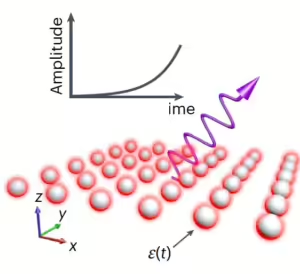A new study shows that by leveraging resonance in photonic time crystals (PTCs), it’s possible to expand the range (or “bandgap”) over which light interacts with these materials, using current technology levels. By designing the materials to resonate, researchers found they could significantly enhance this bandgap with realistic laser power and material types, an important step toward practical, experimental PTC applications.
Researchers from universities in China, Germany, Finland, and Finland aimed to overcome a key challenge in developing PTCs: most materials lack the strength to support a noticeable momentum bandgap. This gap is crucial for practical applications, like light amplification, but is hard to achieve at optical frequencies. This team focused on using resonant materials to expand the bandgap without needing exotic materials or excessive power, making PTCs more accessible for real-world uses.
The researchers used time-modulated resonance in both bulk materials and specially designed surfaces (metasurfaces) to enhance the bandgap in PTCs. They tested different resonant structures, comparing how these enhanced bandgaps compared with conventional approaches that rely on changing the material’s plasma frequency. In the metasurface experiments, they adjusted surface capacitance over time, and then compared how non-resonant versus resonant surfaces impacted the bandgap. Computer simulations helped validate their results.
The team found that resonant structures led to a much larger bandgap than non-resonant designs, with the metasurface approach resulting in a bandgap 350 times wider than a comparable non-resonant surface. Both material types tested showed that resonant modulation could expand the bandgap with realistic power requirements, and the metasurfaces achieved particularly strong amplification within the bandgap.
These results highlight that resonant PTCs offer a practical way to broaden the bandgap, with added benefits over traditional materials, such as supporting both traveling and surface-bound waves. This could pave the way for advanced applications, including ultra-clear imaging and new types of lenses, thanks to the amplified wave details that resonate through the material.
PTCs and quantum dots (QDs) are both advanced materials that can manipulate light, but they operate on different principles and have unique applications. QDs are focused on precise color emission and are well-suited for current display technology, while PTCs offer promising ways to control light propagation and amplification but are still maturing. Over time, PTCs might complement QDs by enhancing brightness and efficiency in displays, though they currently serve different roles in photonics.
Reference
Wang, X., Garg, P., Mirmoosa, M.S. et al. Expanding momentum bandgaps in photonic time crystals through resonances. Nat. Photon. (2024). https://doi.org/10.1038/s41566-024-01563-3

